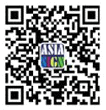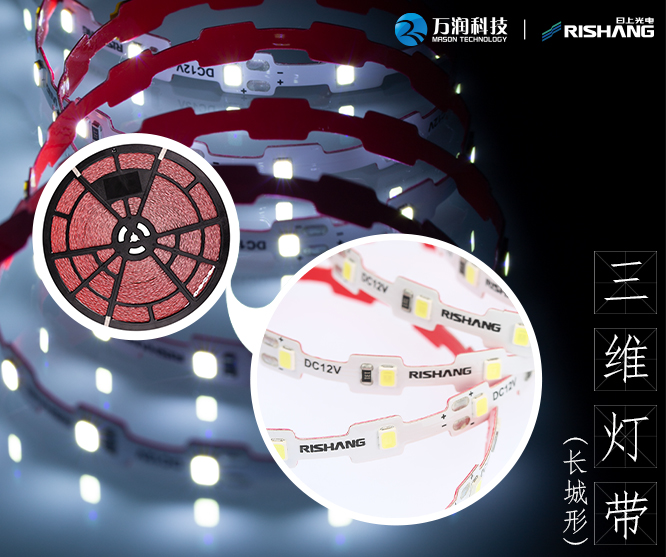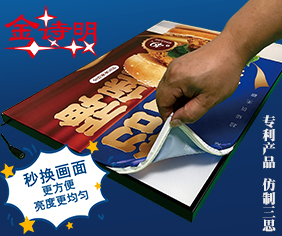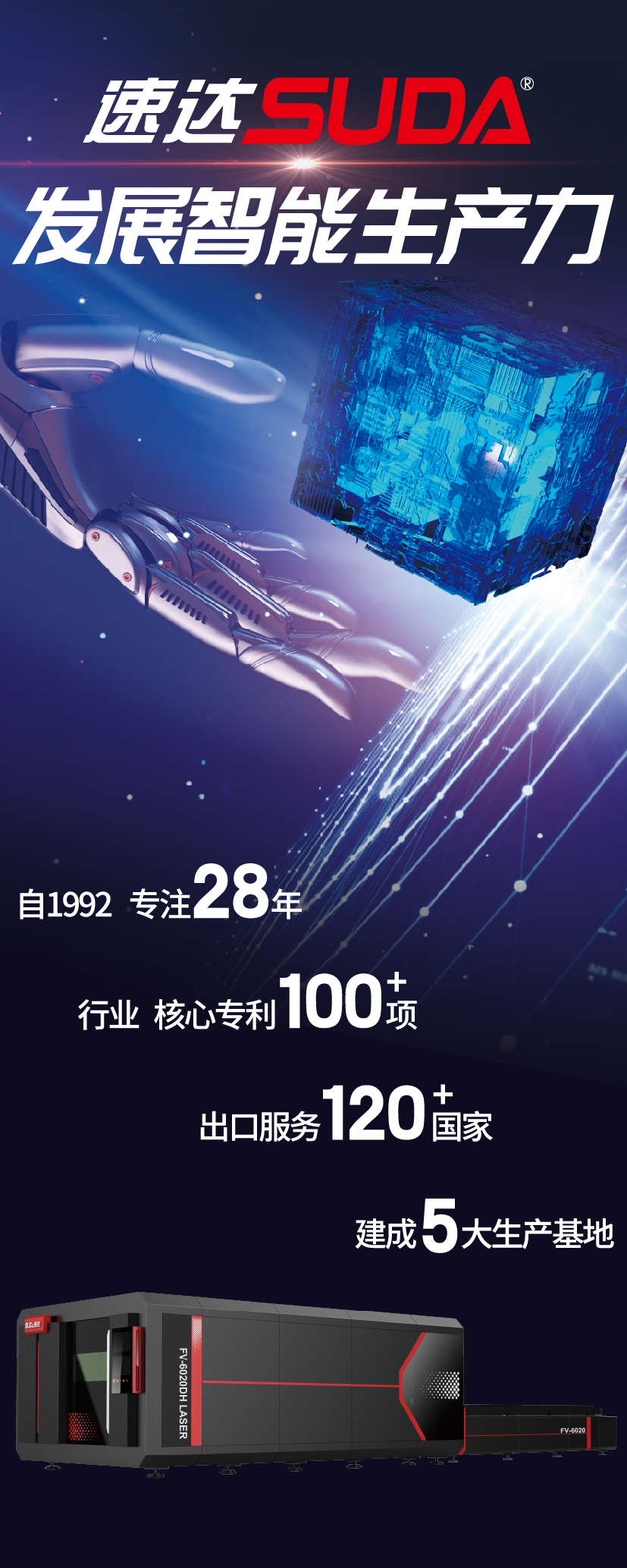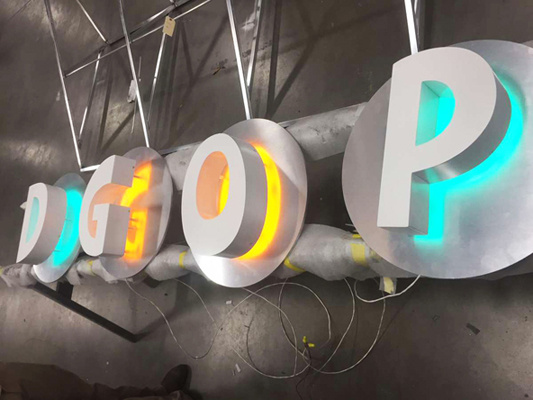
Children have an innate fascination with the alphabet. They learn to craft words—spelling, enunciating, writing—and develop a familiarity with diction. Though these skills may be labeled as basic, work with letters is certainly not child’s play. Just ask the channel letter experts in the sign market.
孩子们天生就对字母有着浓厚的兴趣,他们在成长的过程中学会了单词的拼写、发音和写作,并逐渐熟悉单词。虽然人的本能对于字母的认识拥有天生的敏感,但是制作这些字母标识肯定不会是儿童游戏,于是涉及到这方面的问题我们就需要向标识市场的发光字专家进行请教。
“We build multiple lit signs every day,” says Dan Wett, senior technical specialist, Gemini Sign Products. Channel letters “come in many types, shapes and forms—especially now that LEDs have been introduced to lighting.”
Gemini Sign Products高级技术专家Dan Wett说:“我们每天都要生产大量的发光标识,随着LED光源被引入到照明行业,发光标识从风格、形状制作等方面划分出了许多种类型。”
No matter the level of capability, one must start somewhere; whether it’s in a classroom learning or on a shop floor handling product. Once the proper skills are developed, letters can be used to make the plainest of contexts come to life.
无论能力水平如何,都必须先迈出第一步,无论是在课堂学习还是在店里学习,一旦掌握了合适的技能,发光字就能让简单的环境变得活力灵动起来。
Letter Types
发光字的类型
In simplistic terms, there are a few different ways a sign maker can configure a channel letter. In most instances, this is determined by how the light is displayed within the letter. Let’s take a look at each of these types to get a better understanding of the arrangements.
简而言之,标识制作者可以通过多种方法来制作发光字。在大多数情况下,这取决于光源在标识内部的发光方式。接下来本文将详细为读者介绍发光字的类型,以便让读者能够对发光字有更好的了解。
* Front-lit (face-lit)—“Front lit channel letters are pretty much what the term implies,” says Ron Eppert, vice president of operations for US Sign and Fabrication. “Illumination is projecting through an acrylic lens onto the face of the letter.”
*前置照明(正面照明)——美国标识与制造业务副总裁Ron Eppert说:“前置照明顾名思义就是光源穿透发光字正面的亚克力材料进行照明。”
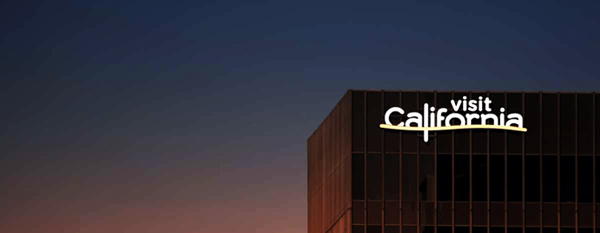
With these applications, an acrylic face is used most predominantly—though polycarbonates and flex faces are also options—but there can also be challenges when colored acrylics are introduced. Some LEDs may have a different appearance than intended. For example, “a blue acrylic illuminate with blue LEDs can appear blurry to a person’s eye,” Eppert says.
在前置照明的应用中,亚克力材料是发光字最常用的表面材料(还可以选择聚碳酸酯材料和柔性材料制作标识表面),但是使用有色亚克力材料也会对标识制作带来一些挑战,搭配一些LED光源可能会带来与预期不同的外观效果。Eppert说:“在标识已经使用蓝色LED作为照明光源的情况下,若依旧使用蓝色亚克力材料制作标识外壳很容易带给人一种模糊不清的视觉效果。”
Along with the face, it’s important to keep the lighting aspect in mind as well.
除了标识的外壳材料之外,更重要的是关注标识照明方面的问题。
“For the standard, front-lit letter, the most common variables that will determine the LED to be used for illumination are the width of the stroke of the letter, the depth of the letter, and the face material of the letter,” says Principal LED’s VP of Sales, Daryl Foreman. “The height of the letter, while one of the variables, is not as much of a determining factor as the other factors.”
首席LED销售副总裁Daryl Foreman说:“对于标准的前置照明标识,标识的宽度、深度以及表面材料的应用将会决定标识使用何种LED照明光源。当然,标识的深度虽然是选择中的一个变量,但并非像其他因素那么重要。”
For the most part, “Front-lit channel letters, or face-lit channel letters, typically have acrylic faces with trim-cap material and large letters can be fabricated with aluminum retainers,” explains Travis Popp, co-founder of Ally Wholesale Signs. “ Face-lit letters have an aluminum return and an aluminum or aluminum composite letter back. These are typically LED-illuminated, but historically these were neon-illuminated.”
Ally Wholesale Signs的联合创始人Travis Popp解释道:“在大多数情况下,前置照明发光字的亚克力表面通常需要装饰盖材料来固定,更大的发光字则需要铝制固定器对其亚克力表面进行固定。前置照明发光字的边框和底部通常使用铝制材料制作,并使用LED光源进行照明,但在过去,人们都是使用霓虹灯光源进行照明。”
Just like neon has given way to LEDs, other changes in front-lit channel letters have occurred.
正如霓虹灯逐渐为LED光源所替代一般,前置照明发光字也在慢慢发生着一些新的变化。
“These types of letters have gone through some changes over the years as to how the face is held in place,” says Eppert. “Trim cap fasteners were the standard method for many years, in the late '90s fabricators began stencil-cutting the letter face leaving a lip (1/8-inch to 1/4-inch) and setting the acrylic behind the lip. This was a cleaner look than the trim cap and is still used today. The newest method is to shoulder-rout the acrylic so it drops into the letter form, providing a retainer-less look.”
Eppert说:“发光字不断发展的这些年来,标识制造商一直在寻找各种各样的方法来固定标识表面材料,使用装饰盖材料进行固定是行业的标准固定方法。90年代后期,制造商使用模板对标识表面进行切割处理并在标识表面留下1/8英寸到1/4英寸的切口,然后将亚克力材料的边缘和切口对接安装在一起。这种方法比使用装饰盖材料进行固定更加整洁,至今仍在使用。目前最新的技术是对亚克力材料边缘进行抛光处理,再将其安装在标识内部,这样就可以提供一个无需固定接口的完美外观。”
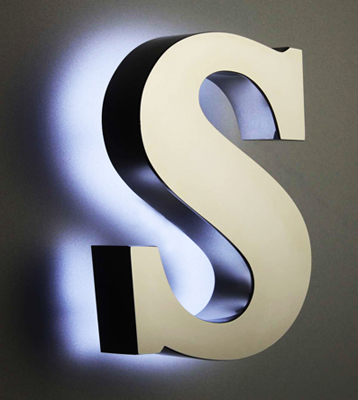
* Back-lit (Reverse)—An alternative option to front-lit, back-lit channel letters offer a much different look.
*背光照明(反向照明)——与前置照明相反的背光照明发光字能够提供一种截然不同的视觉效果。
“Reverse back-lit letters provide a more elegant illumination. They frame the letter profile in light,” Eppert says. “Depending on the distance that the letter is mounted off the substrate you can have a very tightly defined halo effect or a wider washing effect.”
Eppert说:“背光照明发光字能够提供更简洁的外观照明,它们是根据标识的轮廓外观和安装标识与墙面的距离,在标识后方形成一个广泛的光晕照明效果。”
For a company like Gemini that offers both front- and back-lit options, an emphasis is placed on the material choices for the fabricated letter.
对于像Gemini这样前置照明和后置照明发光字均提供的公司,他们则将工作重点放在了制作标识的材料选择上。
“LED-lit fabricated letters are available in aluminum or stainless steel,” Wett says. “Functionally, both metals will light the same. Construction-wise, the stainless letters have a removable can to wire and service the LEDs, while the aluminum letters have a removable trimmed face. Our goal is to produce a consistent light output with both options and metals—and both metals are available in all standard fabricated metal finishes.”
Wett说:“使用LED进行照明的发光字可以选择铝或不锈钢材料进行制作,从功能方面来看,两种金属所呈现的发光效果是一样的;从结构方面来看,不锈钢材料在拆卸电线和保养LED方面很方便,而铝质材料则可以提供一个可移动的平整表面。我们的目标是在使用所有标准的金属加工成品时,都能提供一致的光源输出效果。”
To state it clearly, “Reverse/back-lit channel letters are letters manufactured with thick aluminum faces and returns and polycarbonate letter backs,” Popp says. “They are typically welded but can be fastened by other means. The interior of the letter is painted white, and the opaque faces and returns trap the light and flood the light through a polycarbonate letter back to halo-illuminate the letters on the wall or background.”
Popp说:“背光照明发光字通常使用厚铝板制作发光字的表面和反射通道,使用聚碳酸酯材料制作发光字的背面,标识通常采用焊接的方式进行固定,也可以通过其他方式进行固定。标识内部通常被漆成白色,不透明的表面和标识反射通道会聚焦光线,并透过标识背部的聚碳酸酯材料投射到墙面背景上形成光晕。”
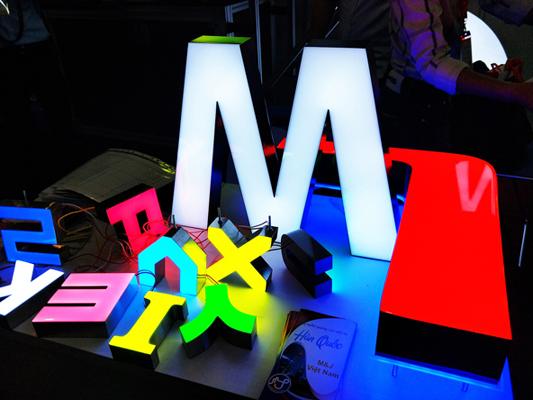
When determining illumination methods for back-lit, the same considerations are in play as with a front-lit application except for the face material.
当我们在讨论背光照明材料的问题时,除了制作标识的表面材料之外,还有一些与前置照明标识相同的问题需要考虑。
Foreman suggests examining “the depth of the return on the letter, the substrate upon which the letters will be mounted, the intensity of the halo desired, and whether the LEDs will be mounted to the face of the letters.” The last point will determine whether the light will shine backward or shine into the letter and create the halo effect.
Foreman建议检查标识的反射通道深度、标识安装的基本材料、所需光晕的亮度以及LED模组在标识内部的安装位置,而LED模组的安装位置将确定光线照射在墙面上所产生的光晕效果。
* Open-Face—This is where we get into some of the less introductory, more complicated methods of channel letters.
* 露面发光字——这类型的发光字我们通常接触得比较少,因为制作这种发光字的方法更加复杂。
“Open-face letters probably present the biggest challenge for illuminating with LEDs,” admits Foreman. “Usually the desired look is that of scripted neon. This look is almost impossible to achieve with regular LED modules. There are several LED companies that offer flexible LEDs that simulate neon, and these are the best choices for open-face channel letters.”
Foreman表示:“露面发光字可以说是LED照明的最大挑战。通常理想的标识外观是由已经设计好的霓虹灯样式组成的,使用常规的LED模组几乎很难实现这种标识外观。不过目前已经有几家生产LED的公司能够提供模拟霓虹灯的柔性LED材料,这些是露面发光字制作的最佳选择。”
“Open-face channel letters were originally designed to house exposed neon and were typically fabricated to a three-inch depth, which would provide a shroud around the exposed neon but at the same time be readable from an angle,” explains Eppert. “While these types of letters fell out of popularity with the arrival of LEDs, they have been making a comeback within the design and specification community. Many of the LED manufacturers now have developed simulated neon products using LEDs.”
Eppert解释说:“露面发光字最初设计用于安装暴露在外的霓虹灯,通常深度为3英寸,这个深度足够在四周为霓虹灯起到一个遮挡的效果,同时可以从正面的角度进行观赏,虽然随着LED的出现,霓虹灯材料不再像过去一样受欢迎,但它们目前也已经在设计和应用领域卷土重来。许多LED制造商现在已经开发出能够模拟霓虹灯效果的LED产品。”
The process of putting an open-face letter into place includes using a combination of fastening and choosing the proper light source.
我们应该选择合适的紧固件和光源组合对露面发光字进行安装。
Open-face letters are “any type of channel letter where the returns are fastened to the letter back and the face of the can is open to expose a light source,” Popp says. “Often exposed neon is used for the artistic/retro effect. It can also be non-illuminated or have bulbs.”
Popp表示:“露面发光字的反射通道在标识后方,而正面完全开放以露出光源材料。我们通常使用霓虹灯来创造一种艺术复古的效果,也可以使用不发光的霓虹灯或是灯泡进行装饰。”
* Specialty Letters—With specialty channel letters, there is a bit of vagueness. Typically, it is classified as something close to one of the above letter types, but with some kind of differentiator.
*特色发光字——特色发光字这个定义有些模糊。这种类型的发光字和上述所介绍的发光字在某些方面较为类似,但是依旧具有差异性。
“Specialty could be considered a combination of both halo and front lit,” says Eppert. “We have done many jobs like this and it requires a minimum depth of three inches and a baffle set into the letter can (we prefer it at two inches from the face) to separate the LEDs, providing the face illumination from the LEDs providing the halo illumination.”
Eppert说:“特色发光字可以看做是光晕发光字和前置照明发光字的组合,我们也做过很多这样的特色发光字,最小的发光字深度仅有3英寸,并且还要在发光字中间设计一个挡板(我们通常喜欢将挡板和标识表面之间的距离设置为2英寸)用以遮挡LED模组,从而让标识同时呈现正面发光和光晕发光效果。”
These types of projects can also include different materials or colors.
特色标识的制作还可以使用不同的材料材质和颜色。
“Specialty channel letters are built like the face-lit channel letter, but have a clear or white polycarbonate letter back,” says Popp. “This allows the face to illuminate and the halo effect reflect off the wall or background.”
Popp说:“特色发光字与前置照明发光字的构建方式相似,但其背面组装了透明或是白色的聚碳酸酯材料,这不仅可以让标识拥有正面发光的效果,其光晕还能够反射在墙壁或是背景上。”
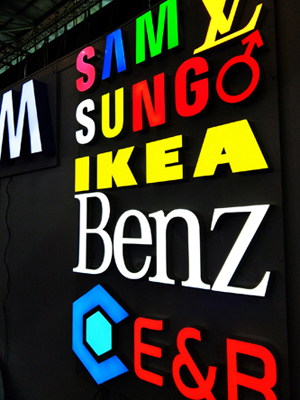
Tips and Considerations
提示和注意事项
Channel letters are becoming increasingly more relevant and popular. This is one of the reasons why sign makers should capitalize on bringing this type of work to their shops. Another good motivator for turning to channel letter projects is because shops likely already have the design capabilities and labor force in place—it’s just a matter of acquiring the equipment and gaining experience.
发光字的逐渐流行促使标识制造商带领着他们的团队也开始不断地向这个领域转型,在设备准备和经验获取方面,这可能是标识公司转向发光字领域发展的另一个原因,因为这些公司已经拥有了相关的设计能力和劳动力。
“Equipment is key,” declares Popp. “Invest in the right equipment and if you cannot buy good equipment let a wholesaler build it for you. Wholesalers can build it cheaper than you can as a startup without equipment. Focus on selling signs and wholesaling what you can sell for good margin rather than adding overhead and feeling like you need to sell anything you can in order to use the equipment you invested so much in.”
Popp说:“投资合适的设备是关键,如果不能买到优质的设备,那么你可以找批发商定制。作为一个没有设备的初创公司,把设备交由批发商生产会更加节省成本。专注于标识的出售和批发以获取更高的优惠利润,减少开销,既然你已经在设备上投入了如此多的资金,那么你就应该物尽其用,生产各式发光字进行销售。”
Beyond choosing the proper equipment, there are elements to consider when tackling these projects. Here is a categorized list of tips from some channel letter professionals.
除了选择合适的设备以外,在处理标识项目时还需要考虑另外一些因素。以下是一些标识制作的专业人士列出的注意事项。
* Plan Ahead—Of course, it’s always wise to make sure a sound plan is in place for any kind of work. This is especially true with channel letters due to all the pieces of the puzzle coming together accurately.
*提前计划——聪明之人会在任何工作开始之前首先制定一个合理的计划。对于发光字的制作来说,提前制定好计划更有利于将其进行精确的组装。
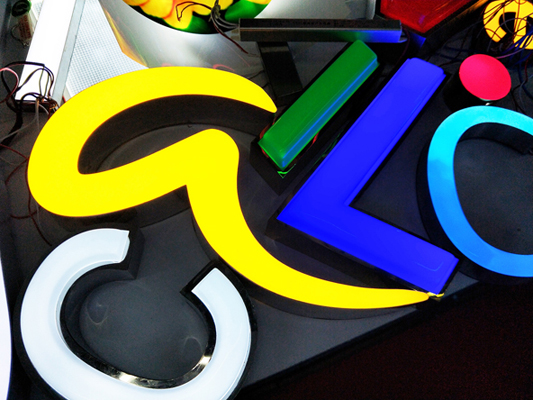
“Make sure building or association restrictions are reviewed,” says Wett. “Many have a limit on the square foot coverage allowed for signs. Make sure you know how this is calculated. Understand the local building codes and plan to secure the required permits. Be sure to know and understand all electrical requirements—codes, restrictions, limits, etc.”
Wett说:“充分了解相关建筑和协会的审查标准,这些标准对于标识的设计尺寸均有限制,因此,你需要了解这些标准来更正确地设计标识的尺寸大小。当然,你还需要了解当地的建筑规范并获得所需的许可证,以及了解所有的电气使用规定以及限制条件等。”
Specifically, Wett suggests inquiring about UL certification with your sign and if a master electrician is needed for the wiring.
具体来说,Wett建议标识公司对UL认证标准要有一个详细的了解,并考虑是否需要聘请电工进行发光字的接线工作。”
“Are there any other electrical issues to prepare for such as lead wire requirements or enclosures?” Wett asks.
Wett问道:“除了电线和外壳的安装以外,我们还需要提前做一些其他的准备吗?”
Popp agrees, stating that unexpected issues are nearly certain to arise. He cites challenges such as “the sales, permitting, and the design phase before a wholesale manufacture would receive the order.”
Popp的回答是肯定的,并表示几乎一定会出现意想不到的各类问题。他表示,标识批发制造商在接收订单之前还会遇到很多关于销售、制作许可获取和标识设计等问题。
* Design Accurately—The design phase, as Popp mentioned, is essential to a successful channel letter sign, says Popp, “The process starts with design.”
*准确设计——正如Popp所说,设计阶段对于制作一个成功的发光字至关重要。Popp表示:“标识的制作始于设计。”

He further explains how design kicks off the project. “When we receive a pre-designed art file as a wholesale manufacture, we import, clean, and size the file. Then supply the customer with an approval drawing and produce production files for cutting, bending and fabrication of the channel letters, raceways, backgrounds, vinyl and other ancillary pieces. Once the approval drawing is accepted by the customer we cut, bend and fabricate the product.”
在标识真正投入制作之前,Popp向读者解释了标识的设计步骤,Popp说:“在我们从客户那里获得标识的设计图之后,我们会将设计图导入至电脑中,并对图形进行重修和调整尺寸大小,在与客户达成一致后,我们将按照图纸进行切割、折弯等操作来制作标识外壳、反射通道、背部材料等一系列标识部件。”
It's at this initial stage that sign makers should address the questions associated with all aspects of the sign, including location, the environment and more.
在标识制作的初始阶段,标识制作者还应该解决与标识相关的安装方面的问题,比如安装位置和安装环境等。
“During the design process,” Wett says, “be sure to evaluate requirements such as visibility—how far away does the sign need to be read—so you can determine what size letters are needed. Also review color contrasts. Are you mounting red letters onto a brick wall, which ends up being unreadable? Does the design allow enough space between letters, so they are readable from the side?”
Wett说:“在标识设计的过程中,一定要确保标识的可见性,提前对阅读标识的距离有一个测定可以帮助我们确定标识的尺寸大小;同时标识与背景的颜色对比也很重要,在砖墙上安装红色标识很容易让人忽视标识本身;确保设计安装的标识之间有足够分隔开的空间,保证标识从侧面也可以阅读。”
“Most LED module manufactures provide either an online layout service or do in-house layouts for the sign companies that can help with these considerations so the best choice for the proper LED can be made,” says Foreman.
Foreman说:“大多数LED模组制造商可以为标识公司提供线上线下的设计咨询,来解决标识公司遇到的问题,帮助他们选择最适合自己产品的LED模组。”
In many instances, it is the lighting that will ensure the success of a sign.
并且在许多情况下,光源照明也是标识成功的关键。
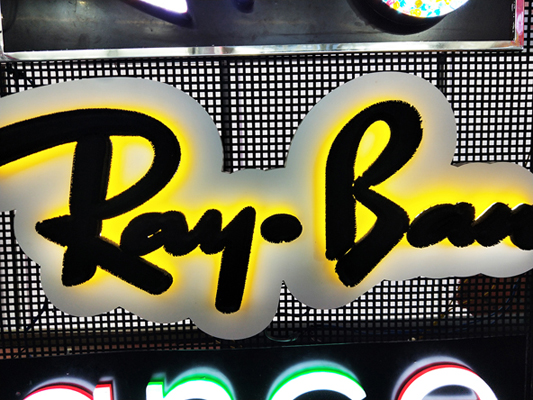
Lighting the Way
标识的照明方式
“While one may define ‘successful’ in a number of ways, I always like to think of a successful project as one that meets or exceeds the expectations of the customer,” says Wett.
Wett说:“虽然人们可以通过多种方式定义‘成功’,但我总是认为那些能够满足甚至是超出客户期望的项目才是成功的项目。”
Most end users, however, are not experts in LED lighting, so it’s safe to assume they will lean on the sign maker or LED manufacturer for advice.
然而,大多数受众并不是LED照明专家,因此在大部分情况下,他们会依赖标识制造商或是LED制造商,并向他们寻求建议。
“Important factors to consider for halo-lit signs are the mounting substrate and distance the letters are pinned off that surface,” suggests Eppert. “The distance you mount a halo lit letter from the substrate has a significant effect on the type of halo generated. A shallow distance promotes a tight isolated halo. A wider distance promotes a wider wall-washing halo.”
Eppert建议道:“在安装光晕照明标识时需要考虑的重要因素是标识的背部材料与安装墙面的距离。标识光源的安装距离对标识最终产生的光晕效果有着显著的影响:标识安装距离墙面越近所产生的光晕范围越小,安装距离墙面越远,所产生的光晕范围越大。”
Foreman agrees that mounting distance is a factor. “In considering the depth,” he says, “the lumen output and the beam angle of the LEDs are most important. In a shallower application, one-and-a-half inches to three inches deep, a wider beam angle helps to spread the light better and avoids hot spots at the face. This holds true also when you go from a five-inch depth to let’s say an eight-inch depth. The deeper the letter, the more lumens you need at the light source.”
Foreman虽然认同标识的安装距离是影响因素之一,但是他也表示:“考虑到标识的具体制作深度,LED的流明输出和光源照射角度也十分重要。对于深度较小的标识(1.5英寸~3英寸)来说,更宽的光源照射角度有助于光线更好的传播并可以避免标识面部出现光斑;对于深度较大的标识(5英寸~8英寸)来说,深度越大,标识所需要的流明输出就越多。”
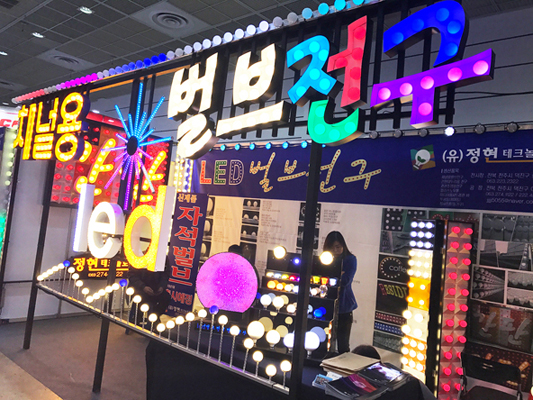
The lighting effect is impacted by a variety of elements. Others include the sign face, backing and material finishes.
标识的照明效果还受到标识表面材料、背部材料和上色颜料等因素的影响。
“A glossy or highly reflective service is going to act like a mirror making the backs of the letters visible,” Eppert says. “If a clear Lexan back is used, you will be able to see the LED modules in the background. To alleviate the problem, you can either modify the background to a matte finish, or if that is not possible, use a white Lexan back instead of clear.”
Eppert说:“光泽度或反射性较强的材料就像一面镜子,很容易让人看到标识的内部结构,如果使用透明的Lexan板材,那么人们很容易看到标识内部的LED模组分布情况。为了解决这个问题,标识背部材料可以选择无光泽或是白色的Lexan板材来代替透明的Lexan板材。”
